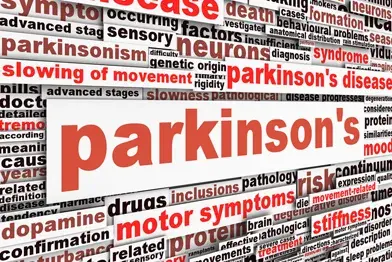Parkinson’s disease (PD) is a chronic and progressive disorder of the nervous system. Genetic factors and environmental triggers are believed to cause the condition and there is no cure for it. Boxing legend Mohammad Ali had bravely battled PD for more than three decades. Neurologists are specialized in diagnosing, treating, and managing disorders of the brain and nervous system such as Parkinson’s disease. Coding in PD can be burdensome and that’s why many neurology practices rely on medical coding outsourcing companies to get the job done efficiently.
Ali was diagnosed with PD back in 1984 when he was only 42 and at that time, the disease was very poorly understood. Today, this vexing condition affects an estimated 7 to 10 million people worldwide, according to the Parkinson’s Disease Foundation. About 60,000 Americans are diagnosed with Parkinson’s disease each year, and this estimate excludes the thousands of cases that go undetected. The Northwest Parkinson’s Foundation reported last year that with the Baby Boomer population just entering their 60s, the number of people with Parkinson’s was expected to increase from 1.5 million in 2015 to 4 million within the next 25 years.
Diagnosis and Clinical Documentation of Parkinson’s Disease
Parkinson’s occurs because of the malfunction and death of neurons, which are vital nerve cells in the brain. Symptoms of this motor system disorder include:
- Tremors in the hands, arms, legs, jaw and face
- Slowness of movement
- Rigidity of the limbs and trunk
- Impaired balance and coordination
Diagnosis Code for Parkinson’s Diseases
Getting the diagnosis right and submitting proper clinical documentation is necessary for error-free billing. A professional medical coding company can ensure this. Clinical documentation must also document the specific type of Parkinson’s disease. ICD-10-CM code G20 is a specific code that can be used to specify a diagnosis.
Parkinson’s disease G20 is applicable to:
- Hemiparkinsonism
- Idiopathic Parkinsonism or Parkinson’s disease
- Paralysis agitans
- Parkinsonism or Parkinson’s disease NOS
- Primary Parkinsonism or Parkinson’s disease
Notations, inclusions and/or exclusions that are specific to this ICD 10 code need to be checked before using it. Excludes are used when two conditions cannot occur simultaneously, such as a congenital form versus an acquired form of the same condition.
Exclusion specific to G20: ‘Dementia with Parkinsonism’ is not included in the above set and has to be coded using G31.83.
ICD-10-PCS Procedure Codes
Deep brain stimulation (DBS) is used to reduce Parkinson’s disease symptoms. ICD-10-PCS procedure codes are used for such inpatient services. Examples include:
- Lead Implant 00H00MZ – Insertion of neurostimulator lead into brain, open approach
- Generator Implantation 0JH60BZ – Insertion of single array stimulator generator into chest subcutaneous tissue and fascia, open approach
- Lead Revision 00W00MZ – Revision of neurostimulator lead in brain, open approach
Patient Encounter Codes
ICD-10-CM code G20 should be accompanied by one of the following patient encounter (CPT) codes: 99201, 99202, 99203, 99204, 99205, 99212, 99213, 99214, 99215, 99304, 99305, 99306, 99307, 99308, 99309, 99310, 99324, 99325, 99326, 99327, 99328, 99334, 99335, 99336, 99337, 99341, 99342, 99343, 99344, 99345, 99347, 99348, 99349, 99350.
Etiology/Manifestation Convention
Some conditions have an underlying etiology as well as multiple body system manifestations due to the underlying etiology. For such conditions ICD-10 requires the underlying condition is sequenced first followed by the manifestation. Dementia in Parkinson’s disease is an example of the etiology/manifestation convention. In the alphabetic index, Code G20, which represents the underlying etiology Parkinson’s disease, is listed first. This is followed by codes F02.80 or F02.81 in brackets, which represent the manifestation of dementia in diseases classified elsewhere, with or without behavioral disturbance.
With the cumbersome coding processes involved in coding for Parkinson’s disease, relying on the neurology medical billing and coding services provided by a reliable outsourcing company is the best option to maximize reimbursement.



0 Comments